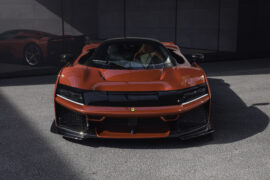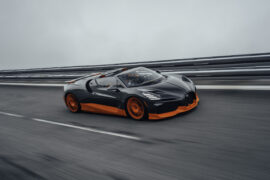Aston Martin’s Valhalla supercar is nearing production, with just a few months left in its extensive development phase. Only 999 units will be built, with deliveries starting in the latter half of 2025. Slated to reach the U.S. as a 2026 model, pricing is expected to hover around $1 million. Initially presented as the AM-RB 003 concept in 2019, the Valhalla has evolved significantly since then.
Initially a collaboration with Red Bull Racing, the Valhalla’s development has shifted to Aston Martin’s own Performance Technologies division. One of the biggest changes is the powertrain, with the concept’s hybrid V-6 engine swapped for a Mercedes-Benz-sourced twin-turbocharged V-8. This engine is shared with other Aston Martin models like the Vantage but is specially tuned for the Valhalla’s unique performance.

The hybrid powertrain combines the V-8 with three electric motors: two on the front axle and one between the engine and the 8-speed dual-clutch transmission. Aston Martin claims the setup produces a combined 1,064 horsepower, allowing the car to accelerate from 0-62 mph in just 2.5 seconds. Top speed is capped at 217 mph, with the electric motors playing a key role in regenerative braking and torque vectoring.
At 3,648 pounds, the Valhalla uses lightweight materials such as carbon-fiber body panels and an F1-style central tub. The design has been updated from the original AM-RB 003 concept, incorporating a wider grille, revised headlights, and larger air intakes. Active aerodynamics enhance downforce, and the extendable rear wing includes a drag reduction system for improved high-speed performance.

The suspension is inspired by Formula 1 technology, with push rods and Bilstein dampers at the front, offering a broad range of settings between comfort and performance. The rear features a multi-link suspension and additional DTX dampers. Braking is handled by carbon-ceramic rotors, while model-specific Michelin tires ensure grip. A drive mode selector adjusts settings from Pure EV to Race mode.
Inside, the Valhalla keeps things minimalist with a square steering wheel, large shift paddles, and plenty of forged carbon trim. Two digital screens display essential information, mounted on a carbon brace that stretches across the cabin. Aston Martin focuses on keeping the design pure, ensuring that performance takes center stage. Production is expected to start in mid-2025, following the Valkyrie’s final production run.





